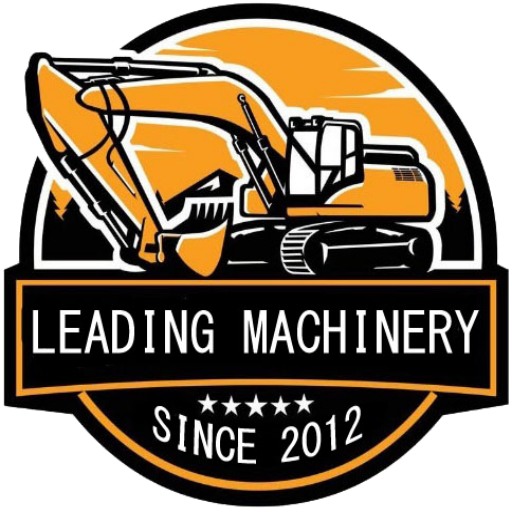Introduction
Buying a used Caterpillar excavator (such as the 320,325, 330, or 336 models) can be a smart investment—if you know what to look for. A thorough inspection helps avoid hidden problems that could lead to expensive repairs.
In this guide, we’ll cover the 10 most important parts to check before finalizing your purchase. Whether you’re buying a used Cat 320 for small projects or a heavy-duty Cat 349, these tips will help you make an informed decision.
1. Engine Condition
The engine is the heart of any excavator. Check for:
Oil leaks (around gaskets, seals, and hoses)
Smoke color (blue smoke = burning oil, black smoke = fuel issues)
Hours of operation (two high hour machines may need rebuilds soon, too low hours may means tampering with hour meter)
Maintenance records (regular oil changes extend engine life)
🔹 Pro Tip: Start the engine cold—unusual noises on startup can indicate mechanic problems and wear. A powerful engine is a must to get a nice excavator, original and strong engine saves your from suffering costly repairs.
2. Hydraulic System
Hydraulic failures are among the costliest repairs in used excavators. Inspect:
Hydraulic hoses & cylinders (look for leaks, cracks, or swelling)
Pump performance (slow movements may mean pump problem or wear)
Fluid quality (dark or milky fluid = contamination)
🔹 Warning: A leaking hydraulic cylinder may means seals replacement needed.
3. Undercarriage (Tracks, Rollers, Sprockets)
The undercarriage affects stability and mobility. Check:
Track tension & wear (loose tracks reduce efficiency)
Roller and idler condition (excessive play = replacement needed)
Sprocket teeth (worn teeth mean track chain replacement soon)
🔹 Fact: Undercarriage repairs can be troublesome and costly
4. Boom & Stick (Arm Structure)
Cracks or welds in the boom and stick weaken the machine. Look for:
Stress cracks (especially near pivot points)
Previous repairs (poor welding can fail under load)
Bent or twisted arms (indicates past overloading)
🔹 Tip: be very cautious if the boom or stick are newly painted, crack my be covered by new paint, make sure you operate the excavator intensively for hours, big crack may reappear even if newly painted.
5. Bucket & Attachment Points
The bucket takes heavy abuse. Examine:
Teeth & cutting edges (worn teeth reduce digging efficiency)
Pins & bushings (excessive play means replacement is due)
Quick coupler function (if equipped, test for smooth operation)
🔹 Cost Alert: A brand new bucket can range from 1,500–1,500–5,000+.
6. Final Drives & Swing Mechanism
The final drives power the tracks, and the swing bearing allows rotation. Test:
Smooth rotation (grinding noises = bearing wear)
Final drive leaks (oil leaks lead to gear failure)
Excessive play (indicates internal wear)
🔹 Critical: A failed final drive can cost 8,000–8,000–15,000 to replace.
7. Electrical System & Controls
Faulty wiring can cause operational issues. Verify:
Dashboard warnings (check for error codes)
Joystick responsiveness (delayed movements signal control problems)
Lights & sensors (ensure all functions work)
🔹 Common Issue: Electrical gremlins in older Cat models (e.g., 320D) may require harness replacement.
8. Cooling System (Radiator & Hoses)
Overheating destroys engines. Inspect:
Coolant level & color (rusty coolant = corrosion)
Radiator fins (clogged fins reduce cooling efficiency)
Fan belt condition (cracks mean imminent failure)
🔹 Maintenance Tip: Flush the cooling system if buying a high-hour machine.
9. Cab & Operator Comfort
A damaged cab affects resale value. Check:
Seat condition (worn seats reduce operator comfort)
AC & heating function (broken climate control is expensive to fix)
Glass & door seals (leaks lead to water damage)
🔹 Resale Factor: A clean, functional cab increases buyer interest.
10. Service & Maintenance History
A well-documented machine is safer to buy. Ask for:
Logbooks & repair records (proves regular maintenance)
Engine & hydraulic fluid analysis reports (reveals internal wear)
Previous ownership (rental machines often have high abuse)
🔹 Red Flag: No records? Assume the worst and inspect extra carefully.
Final Checklist Before Buying
✅ Start the engine cold & listen for unusual noises
✅ Operate all hydraulic functions (boom, stick, bucket, swing)
✅ Walk the undercarriage for wear & damage
✅ Check for leaks (engine oil, hydraulics, coolant)
✅ Review maintenance records
Conclusion
Buying a used Caterpillar excavator can save money—if you avoid hidden problems. By inspecting these 10 critical parts, you’ll reduce the risk of costly repairs and ensure a reliable machine.
Need a trusted supplier? Leading Engineering Machinery provides fully inspected used Cat excavators with warranty support. Contact us today for the best deals on Cat 320, 325, 330, 336, 349 and more!
